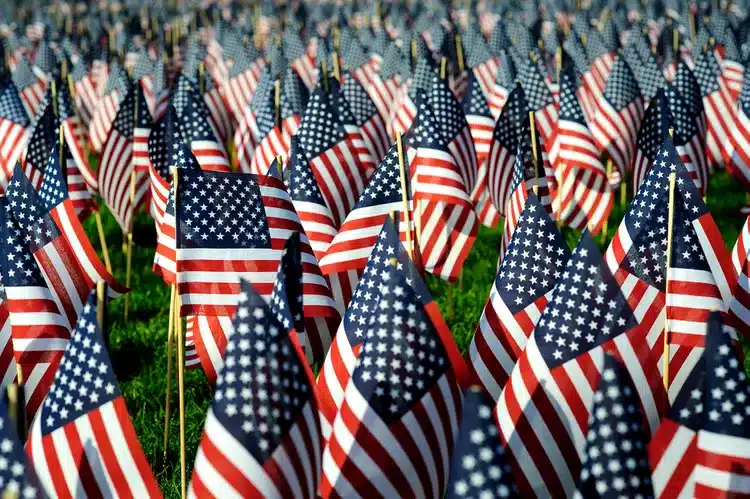A three-day weekend is on the horizon, and while we anticipate a welcomed day off work, let’s not forget to recognize the meaning behind Memorial Day.
Since the early 1970s, Americans have celebrated Memorial Day on the last Monday in May. However, the history of Memorial Day dates back to the late 1800s, and it was originally observed on May 30 regardless of what day of the week that date occurred. Memorial Day first began as a way to remember the fallen from the Civil War. Citizens informally placed spring flower memorials on the graves of that war’s soldiers. In 1866, the town of Waterloo, New York, formalized this ritual by hosting a city-wide “Decoration Day,” encouraging citizens to create memorials on the graves using flags and flowers. Two years later, the day became a national event that included a speech at Arlington National Cemetery by General James Garfield, who later became President of the United States. The 1868 event included decorating 20,000 Confederate and Union soldiers’ graves in the cemetery. Arlington continues the annual event and most years the key speaker is the U.S. President or another national dignitary. Other cemeteries across the country also hold services or mark graves with flags.
Although the observance began as a way to honor victims of the Civil War, after World War 1 observers began to honor the dead of all America’s wars. People began to refer to Decoration Day as Memorial Day after World War II and the name was officially changed in 1967.
The day continued to be observed on May 30 until the Uniform Monday Holiday Bill. The U.S. Congress passed the bill on June 28, 1968, but it was not enacted until 1971. That action made the day of observance the last Monday in May. That same law declared Memorial Day as a federal holiday.
It also declared the observance of other federal holidays such as George Washington’s birthday and Columbus Day to be recognized on certain Mondays. It was an effort to give workers three-day weekends and was encouraged by the automobile and travel industries. Originally, Veterans’ Day was moved from November 11 to the last weekend in October. However, that did not last because advocates for Veterans’ Day argued that Veterans’ Day was actually Armistice Day and was recognized globally on November 11. That change only lasted three years, and in 1974 Veterans’ Day moved back to November 11. Speaking of Veterans’ Day, some people confuse Veterans’ Day and Memorial Day; yet, the difference is that Veterans’ Day honors all veterans of U.S. Armed Forces while Memorial Day remembers those who gave their lives.
For many Americans, Memorial Day is synonymous with the beginning of summer and has become a commercialized holiday where merchants offer discounted pricing. The three-day weekend provides an extra day for traveling or family gatherings. Unfortunately, fallen service men and women are sometimes forgotten on their own holiday.
Let’s choose to remember the meaning behind the memorial.




